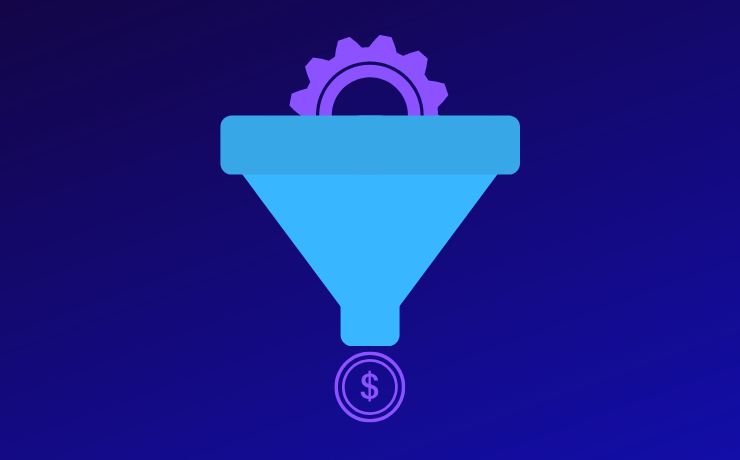You have done everything you can to optimize the conversion rate of your e-commerce funnel and website. You’ve seen some success, but you still feel that your site can do much better. Perhaps you need a more refined and streamlined approach to the way you market your website.
The first step to this is setting up an eCommerce sales funnel that streamlines your activities and aligns them with the buyer’s journey.
What Is an E-Commerce Sales Funnel?
An eCommerce Sales funnel in the context of e-commerce businesses is the path your shoppers take from the first time they get to know about your brand to becoming your customer. For ease of comprehension, we will stick to the AIDA (Awareness, Interest, Decision, Action) model as the steps of the conversion funnel.
Below are the three steps to build the stages of your eCommerce sales funnel according to the AIDA model:
- First step: Understand the buyer’s journey
- Second step: Map the buyer’s journey to the stages of the conversion funnel
- Third step: Define the activities to progress the shopper through the funnel
Although the stages of the funnel may look straightforward, practically, they’re not. The way a shopper makes a purchase is quite intricate, though the steps they may take can be qualified into one of the stages of the AIDA model.
In the remaining part of the article, we will look at each stage of the conversion funnel and how you can optimize the different stages.
Stage 1: Awareness
Also known as the Top of the Funnel stage (TOFU), in the awareness stage, the shopper identifies their need or a problem and starts looking for potential solutions.
The way B2B and B2C buyers research their pain areas vastly differs, and so should your approach toward solving their problems.
For example, a B2C buyer might watch video reviews of a smartphone before buying it whereas a B2B buyer will perform thorough research. The B2B buying cycle also tends to be longer than that of B2C.
So, your goal in this stage is to acquaint the buyer with your brand without being too pushy about it. One way you can achieve this is by creating content that assists the shopper to solve their problems.
For example, Art of Manliness, a website that started as a blog for men, now has an e-commerce store as well. Their strategy is to create content that helps men become a better version of themselves.
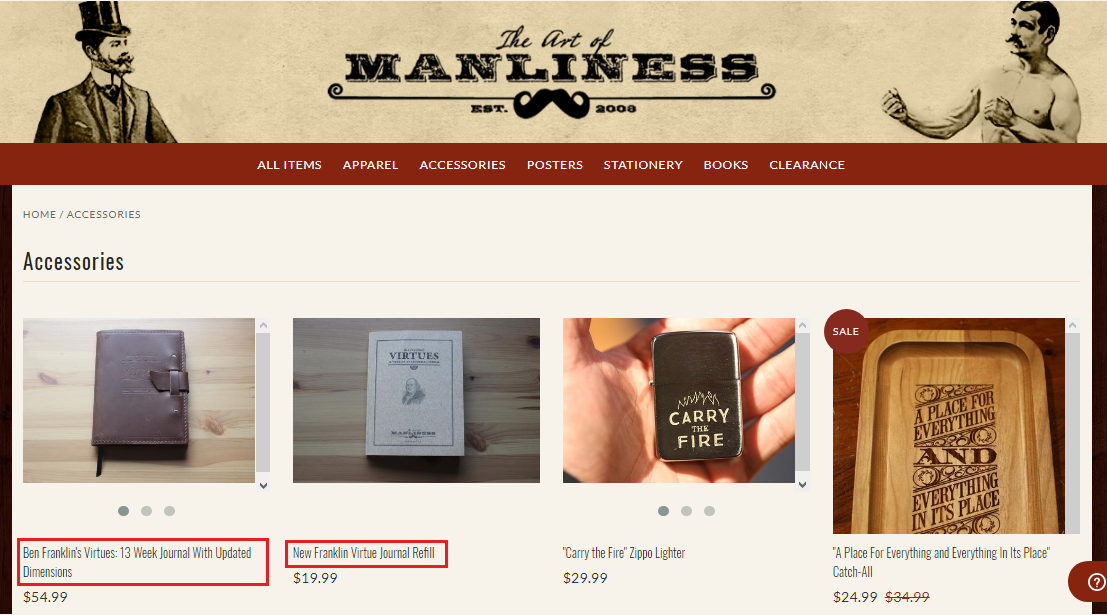
Here is AoM selling a journal that outlines Benjamin Franklin’s 13 virtues.
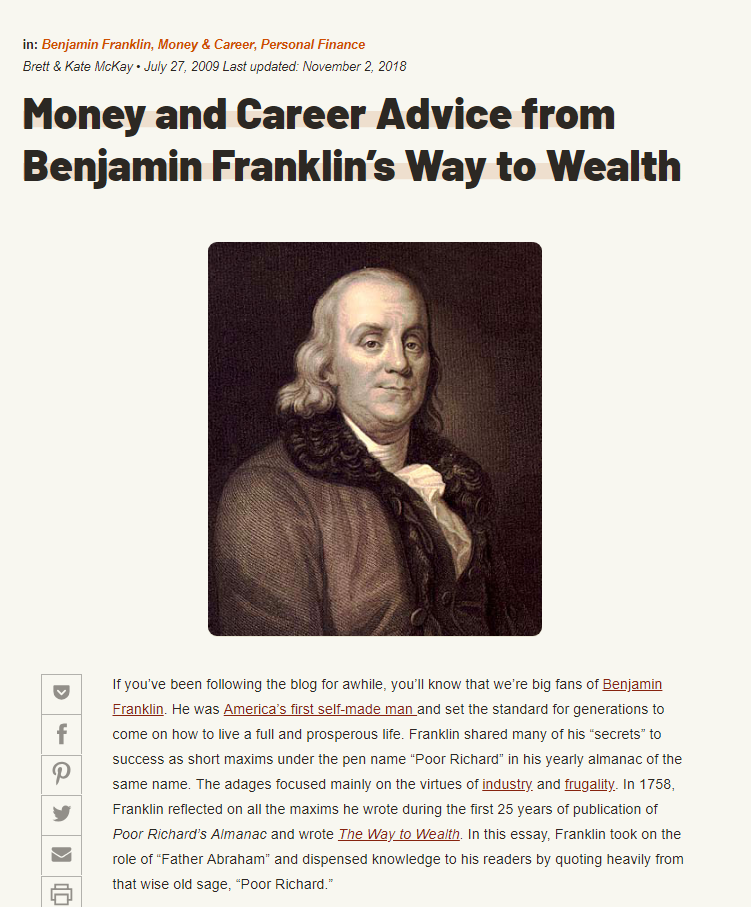
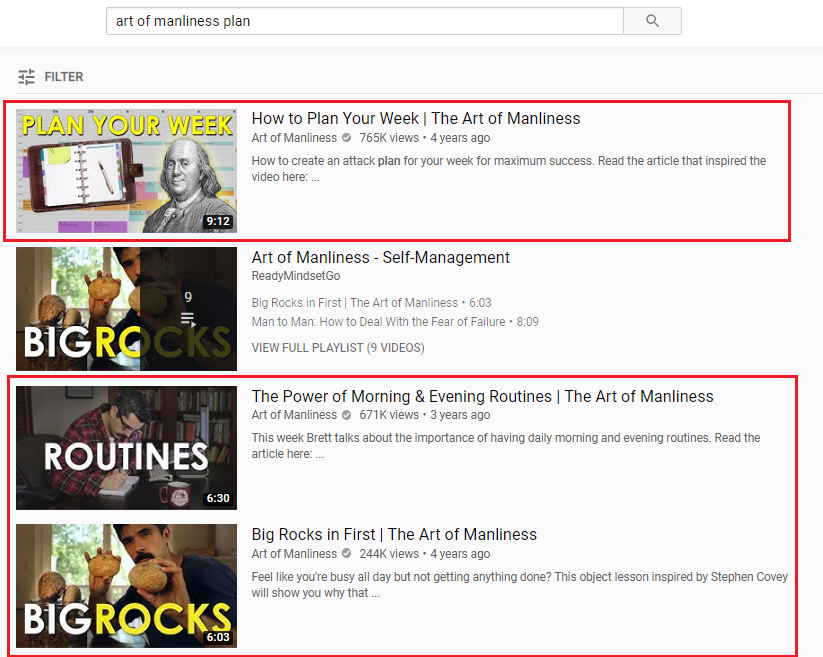
And here is content that aligns with the products they sell.
Sales Funnel Boosters for the Awareness Stage
- Focus on the technical aspects of the SEO for your website. Make sure your website is mobile responsive and loads faster. Avoid making it clunky
- Create content that resonates with your audience. Since the buyer is just getting to know you, the content at this stage should be simple and easy to comprehend
- Engage your shoppers on social media platforms
- Invest in paid ads such as search ads, display ads and social media ads
Stage 2: Interest
Once the user is cognizant of your brand, in the interest stage, the shopper is interested in your brand, content, and product, but they haven’t zeroed in on their decision just yet. They are still evaluating other alternatives. So, an obvious step is to keep your visitors engaged on a continual basis.
One way to do this is by upping the ante of your content. If you are creating blog posts and videos for the attention stage, then for the interest stage, start creating gated content so that you can ask for visitors’ email addresses as an entry point to initiate communication.
Evelo, an electric bike manufacturer based out of Seattle, has done it by producing a buyer’s guide. Users need to enter their email address to download the ebook. This way, Evelo is getting their email addresses so that they can keep in touch with their potential buyers.
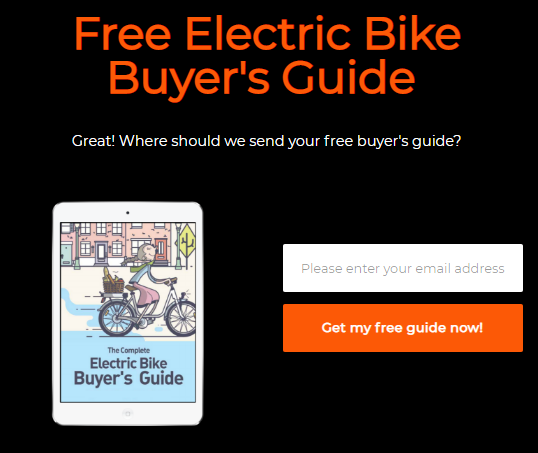
You can create the following types of gated content:
- Ebooks
- Guides (How-to, Buyer’s, etc.)
- Templates
- Whitepapers
- Case studies
- Product demos
Funnel Boosters for the Interest Stage:
- Implement exit intent pop-ups that ask for visitor’s email address. Here is how Selini NY does it:
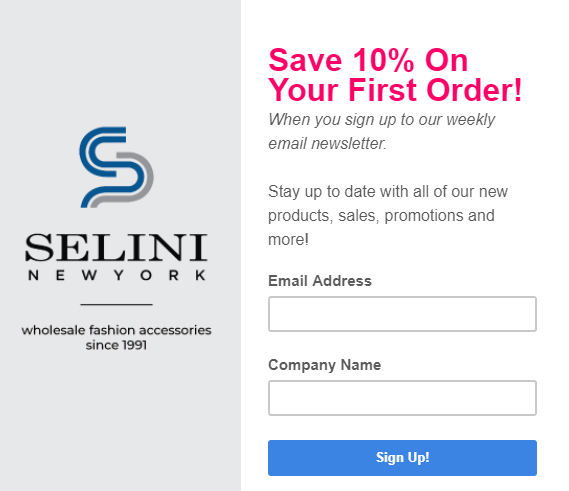
- Make social media a part of your website. Let users know how they can connect with you
- Be proactive on social media platforms. If someone asks a question, be prompt in responding to the query
- Use a social media listening tool to find relevant content to your brand. If you find a tweet about someone looking for a relevant product, do not hesitate to respond!
- Have an email newsletter program in place
Stage 3: Decision
In the decision stage, the shopper has shortlisted a few products or brands to choose from. In this stage, your focus should move from the content to the product itself. Talk about the benefits of the product rather than explaining the features. Customers don’t care if it has cutting-edge technology. All they want to see is whether the product helps alleviate their problem.
Make sure that your product pages follow the best practices. That means the product page should consist of multiple product images, compelling product copy, and any other content that will impel the buyer to purchase the product.
Here is an example of a product page on Amazon.com:
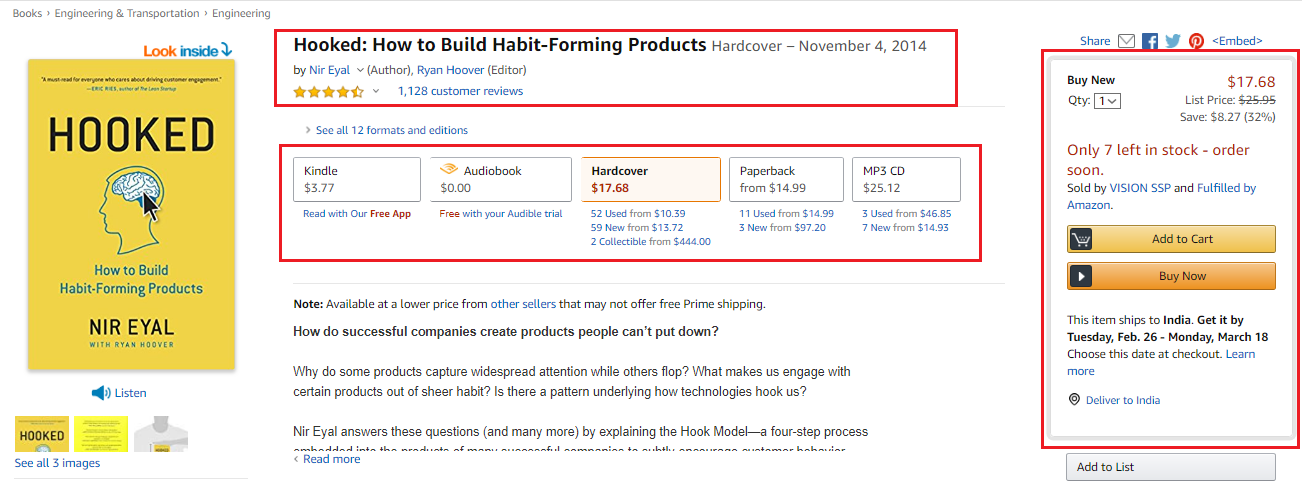
The above-the-fold area consists of product images, their availability across different media and the main call-to-actions:
Below, it mentions testimonials by industry leaders and trivial product details that would help the shopper buy the book:
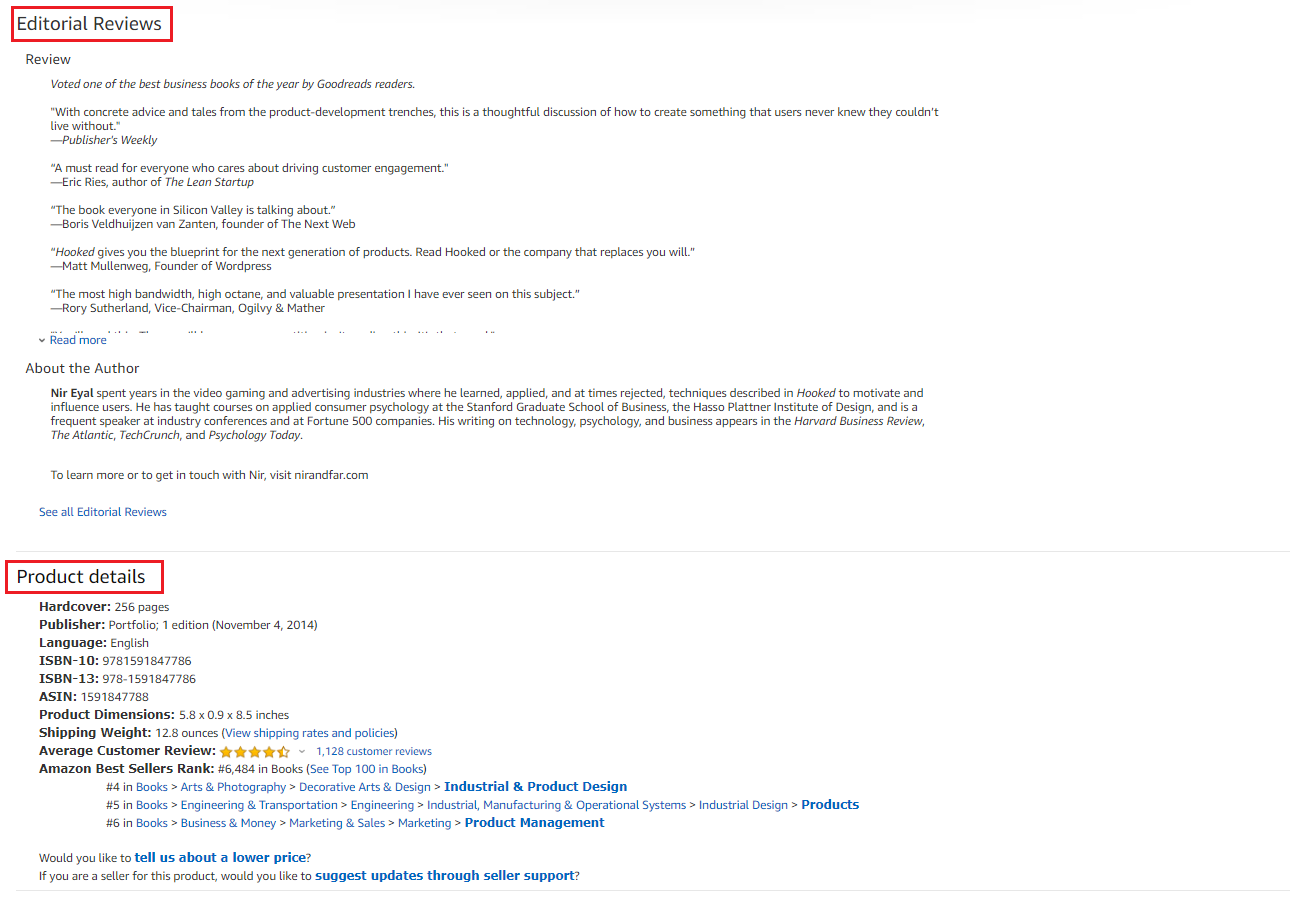
eCommerce Sales Funnel Boosters for the Decision Stage:
- Keep a product-related Q&A section where users can ask questions and community members can answer them
- Social proof plays a huge role in the way people make decisions. Include product ratings and reviews on the product page as well. You can put product ratings in a prominent place, such as below the product name at the top of the page.
- Offer coupon codes or discounts to speed up the buying process
Stage 4: Action
The action stage is also known as the bottom of the sales funnel stage (BOFU), and this is the stage where the shopper takes out their wallet. They’ve made up their mind to buy from you. In this stage, you need to make sure that the customer doesn’t navigate away from your website.
Assess the checkout process and steer clear of any field that doesn’t contribute to the checkout process. Your goal at the action stage should be two-fold:
- Make the shopper complete the purchase
- Entice them to buy from you again
To achieve this, implement the following tactics.
Funnel Boosters for the Action Stage:
- Optimize the checkout process
- Pre-populate fields such as city and pin code
- Test different variations of your checkout page
- Set up loyalty and affiliate programs to retain your shoppers
- Follow-up on cart abandonment
Conclusion
Having a well-thought eCommerce sales funnel is a prerequisite to skyrocketing your conversion rate. As mentioned above, no two buyers purchase the same way. Therefore, think of all the ways a buyer can land on your website and take it from there. Also, having a CRO tool can take the guesswork out of the game and speed up this process.
